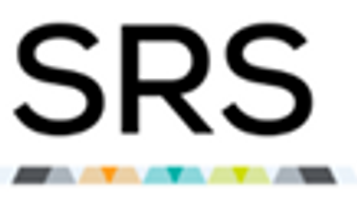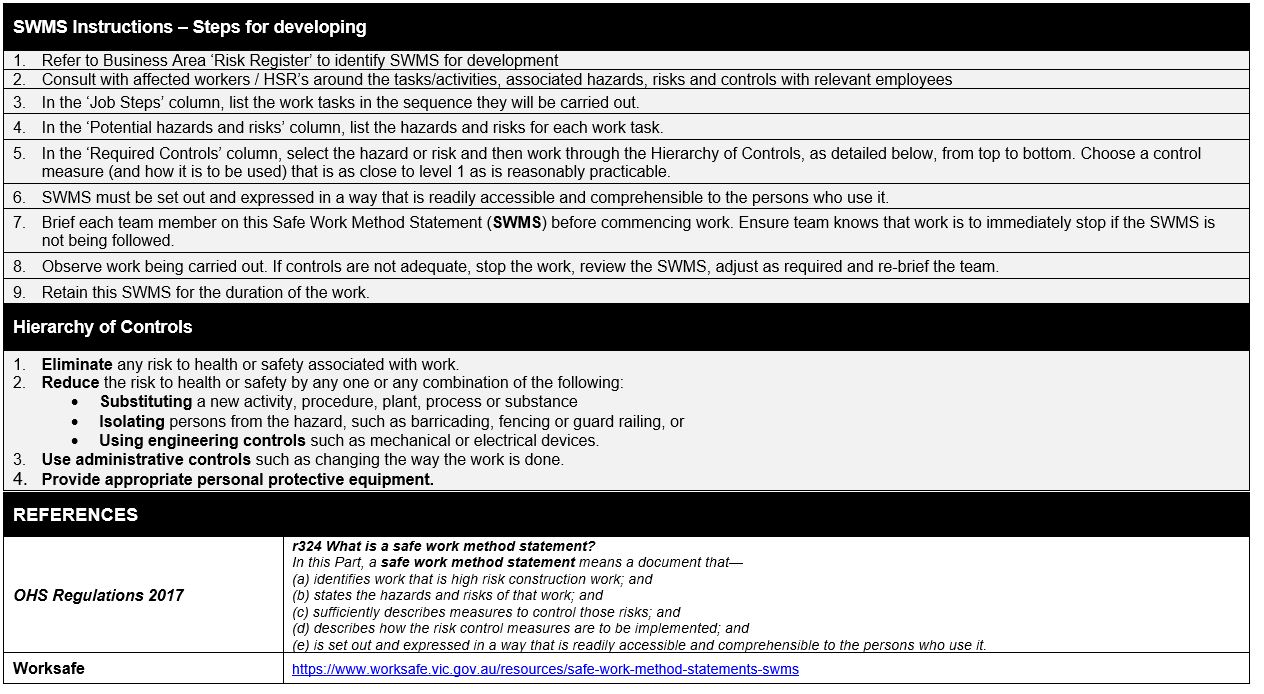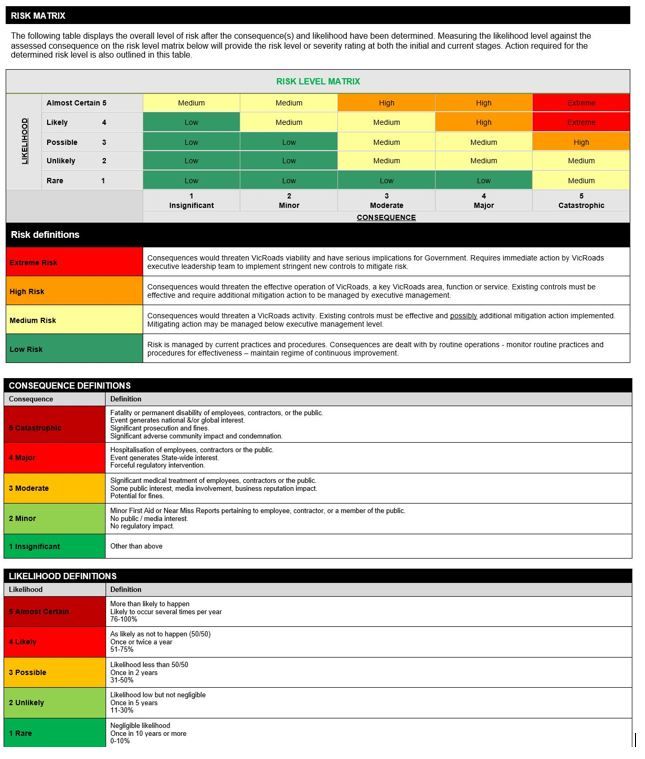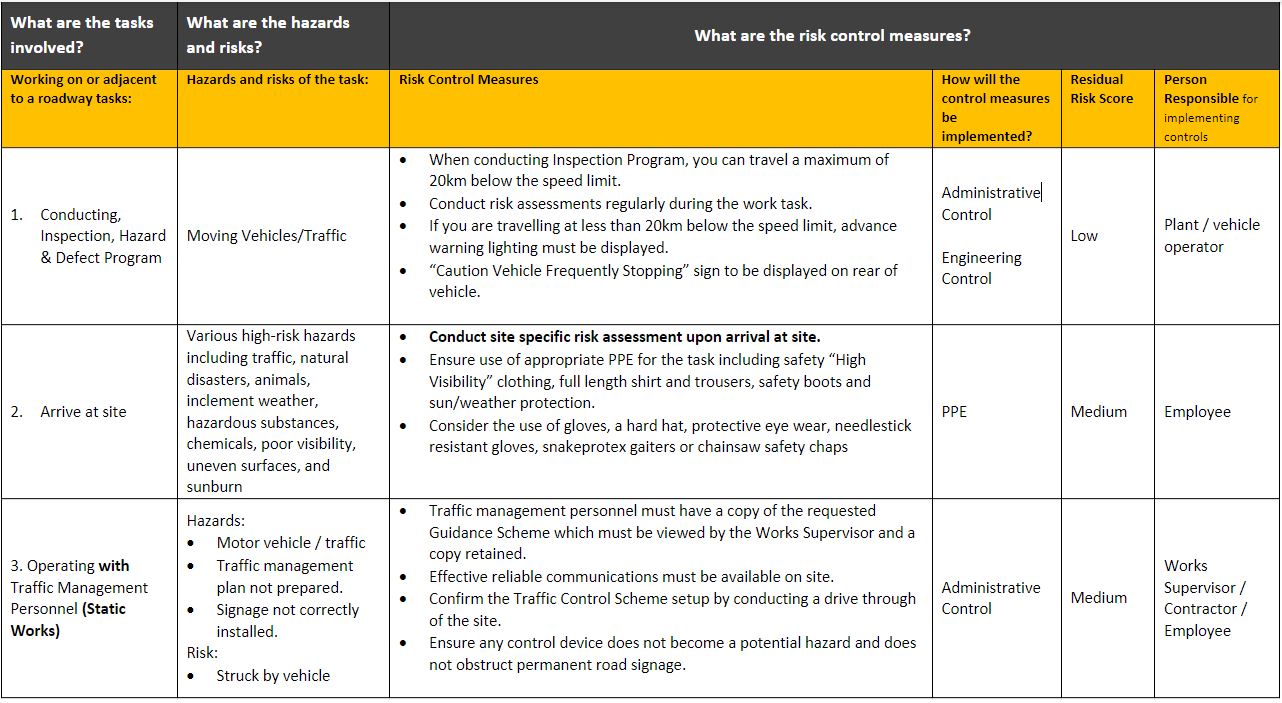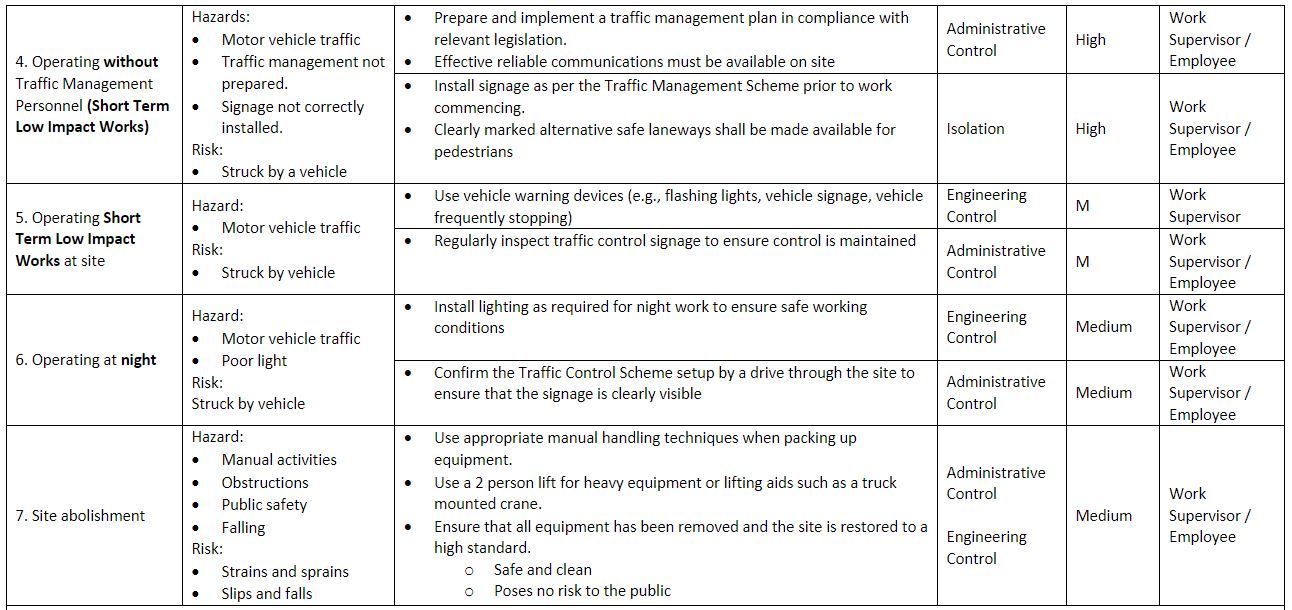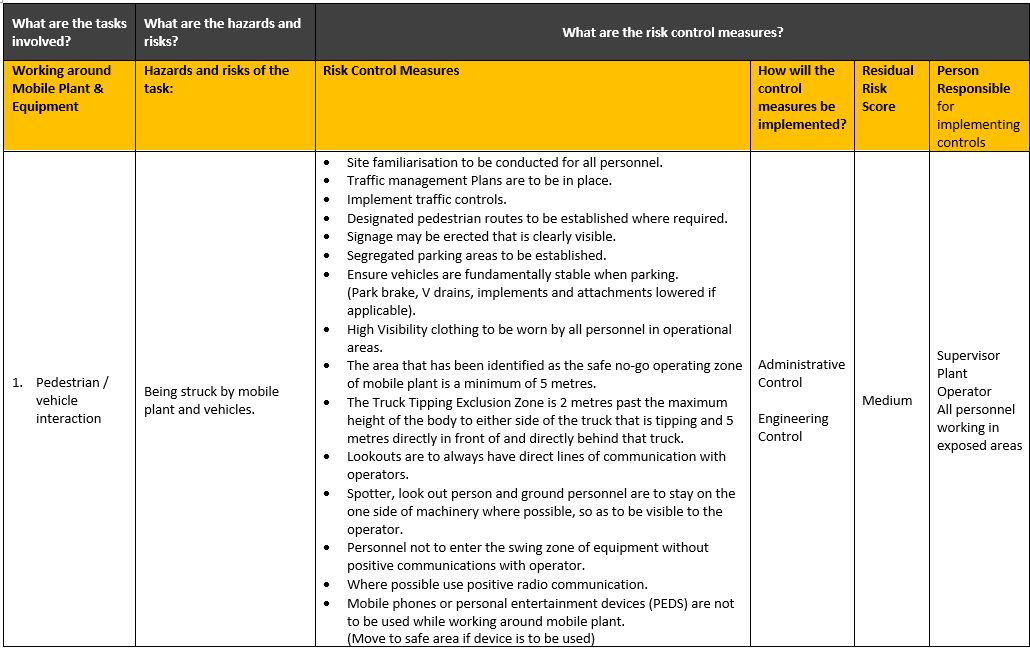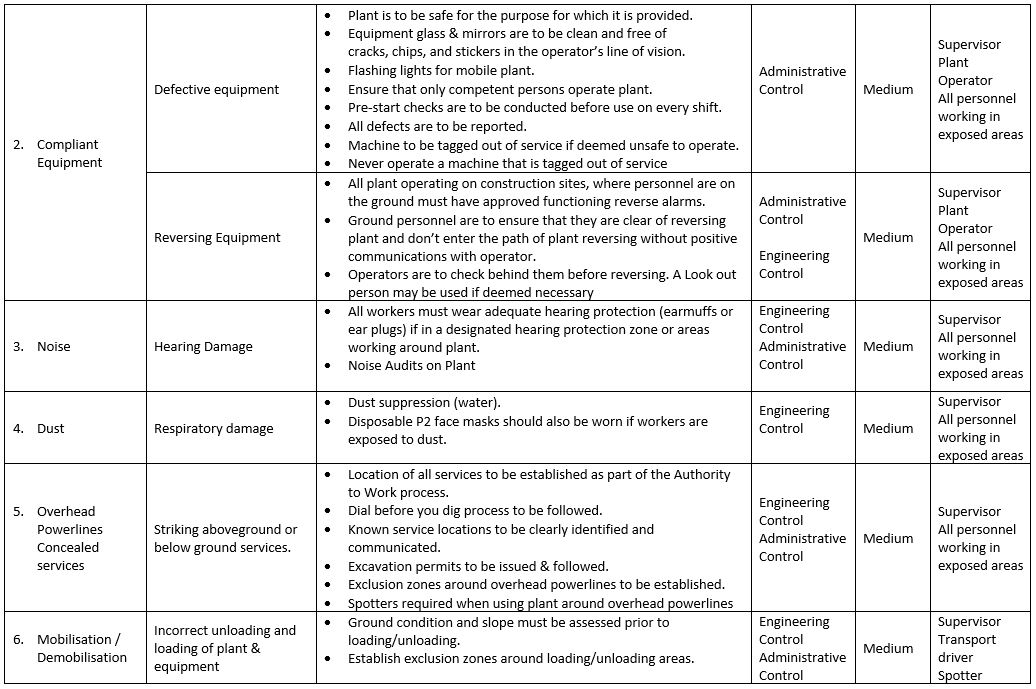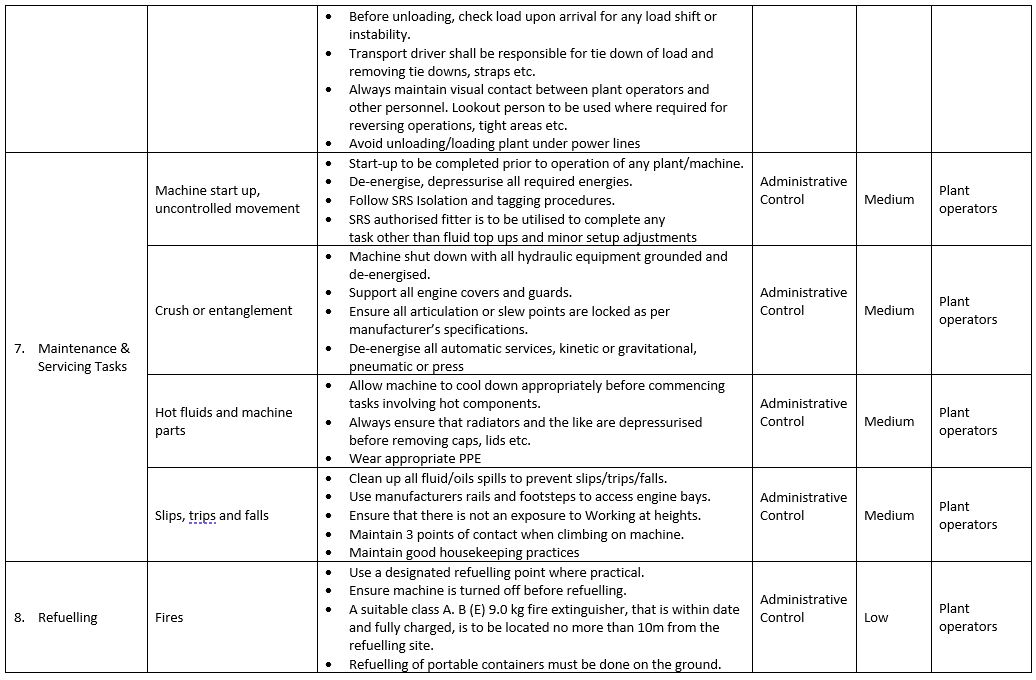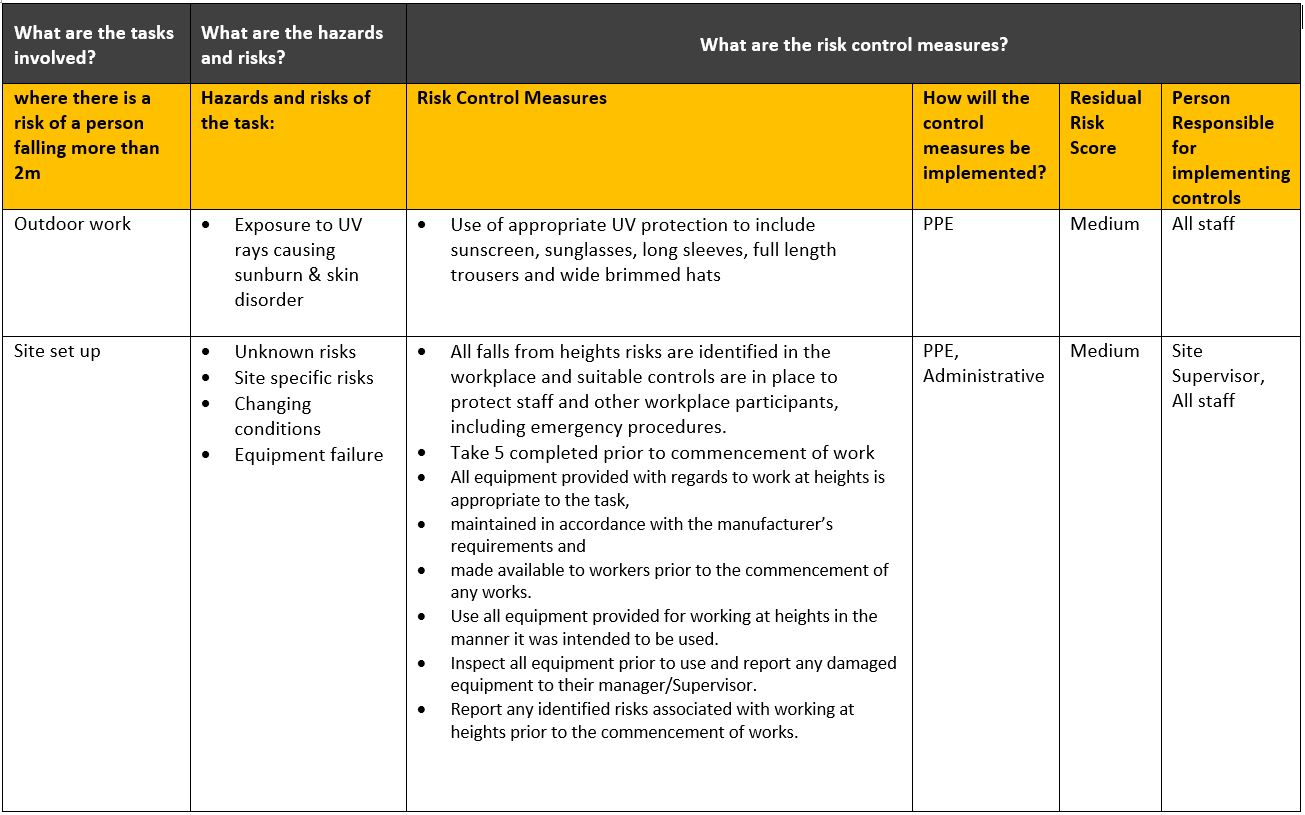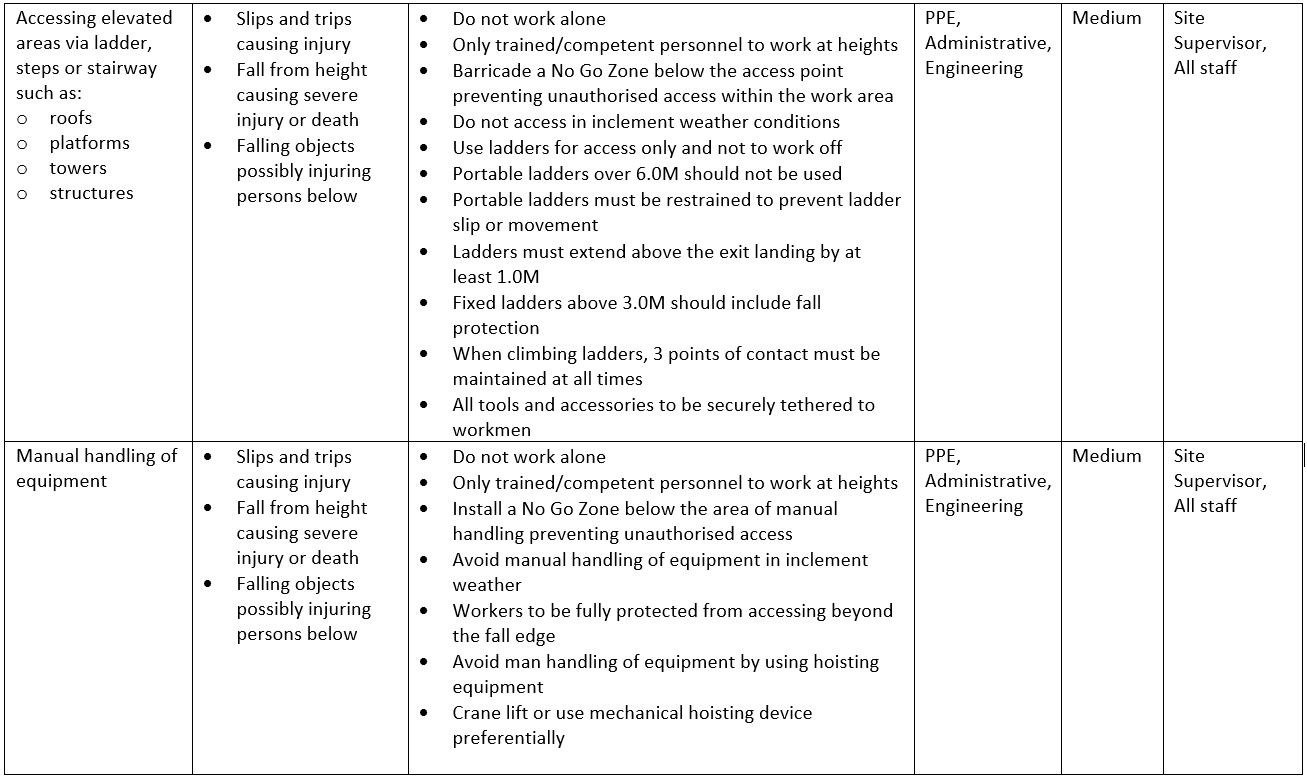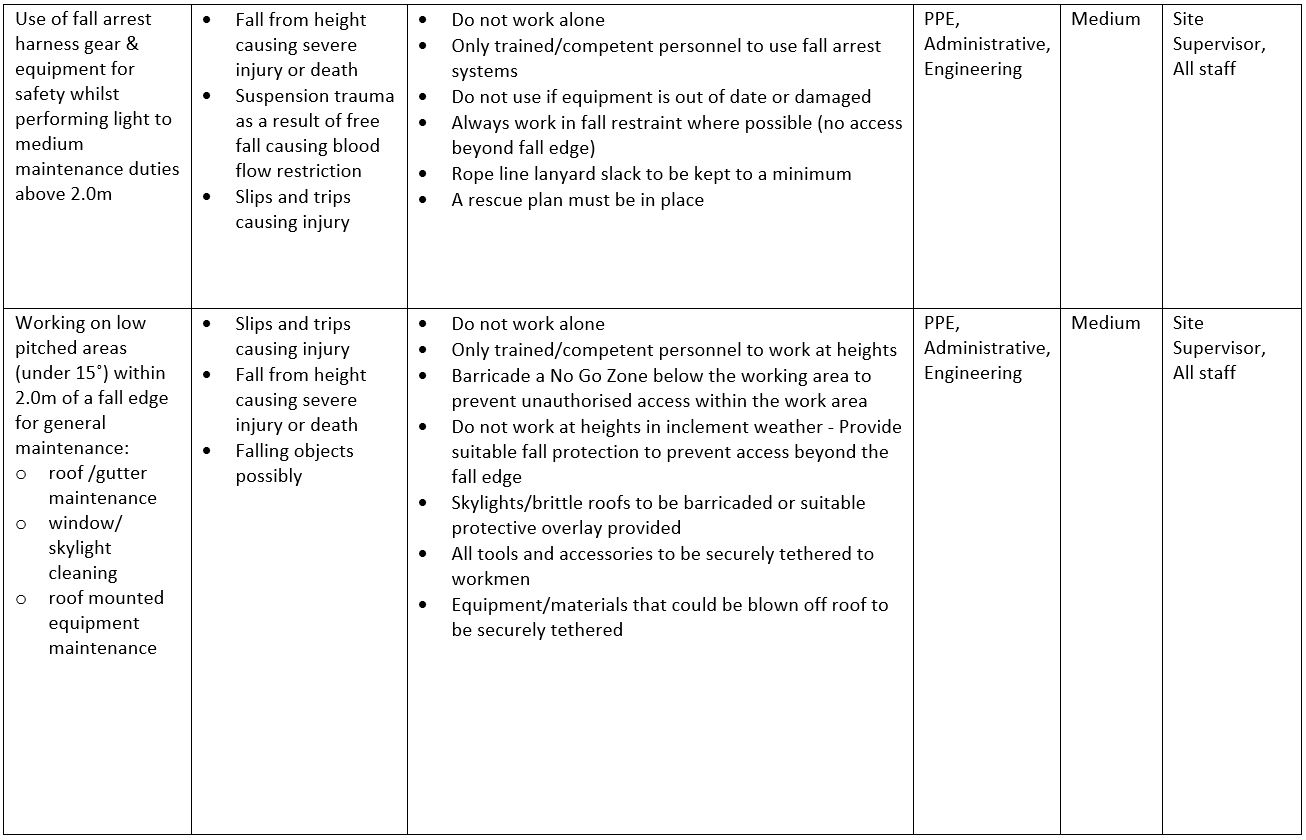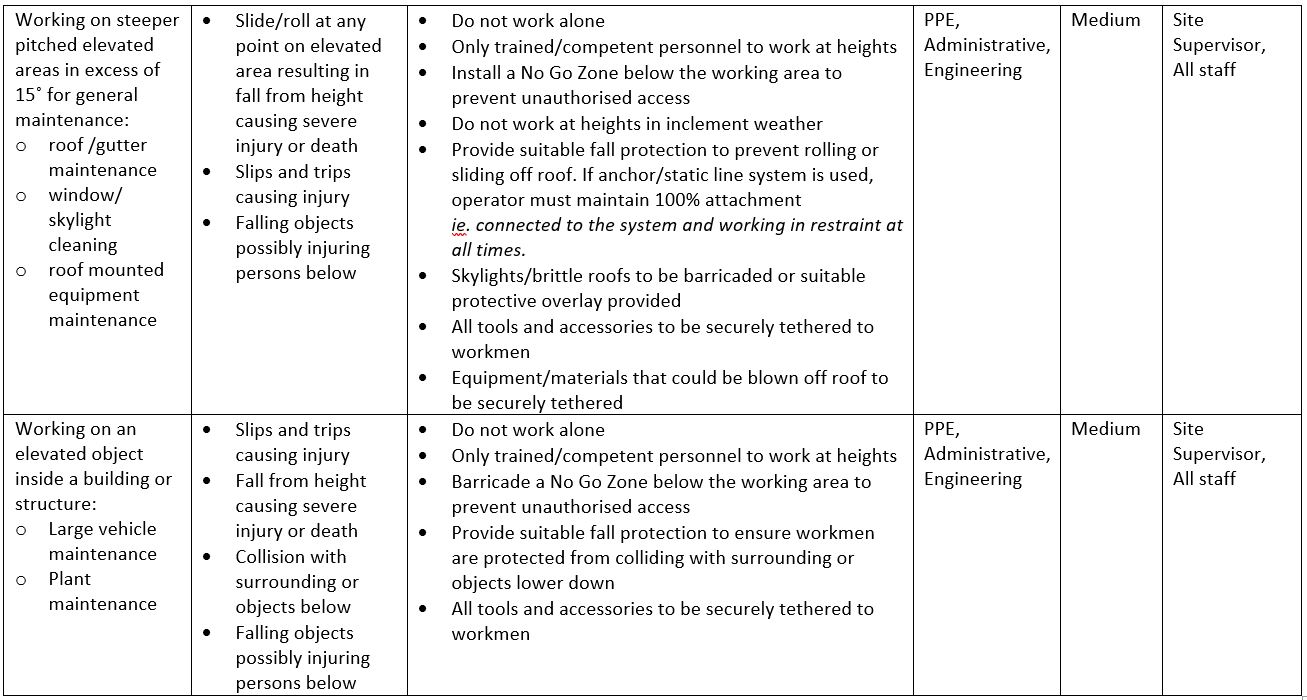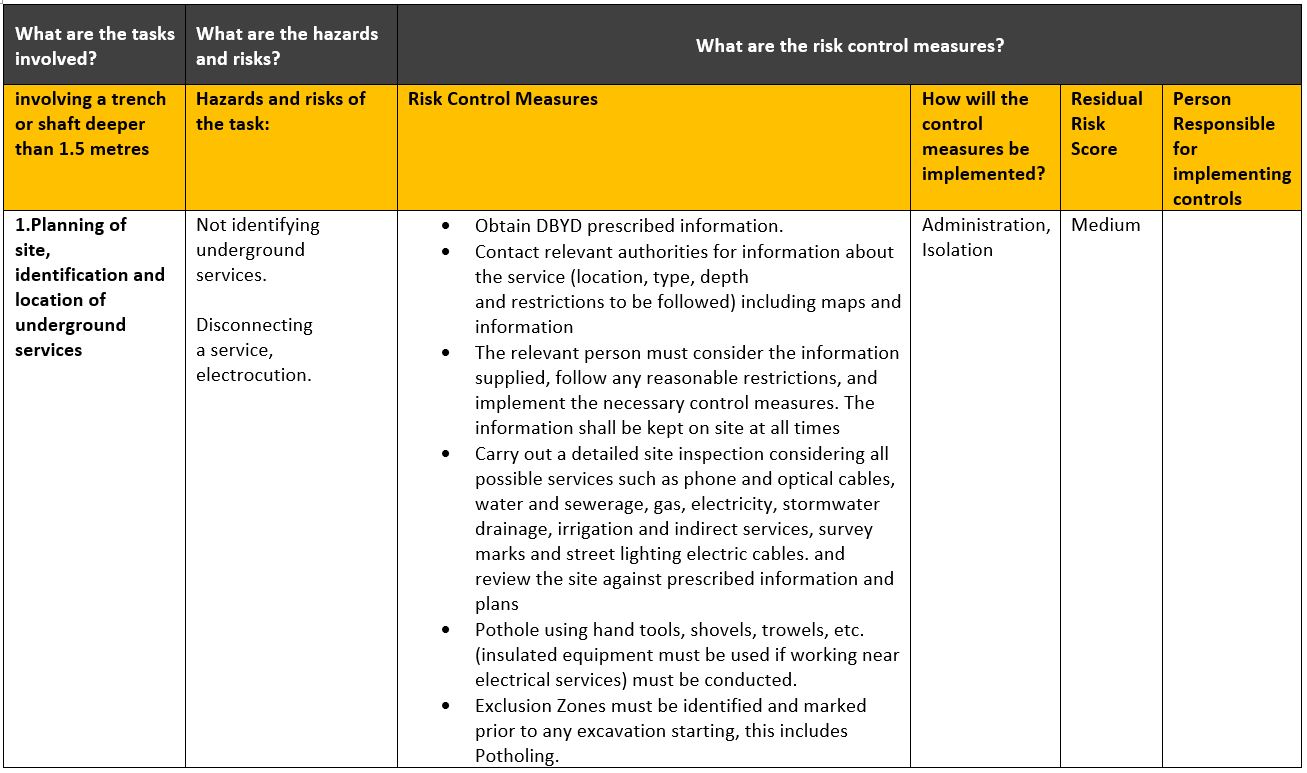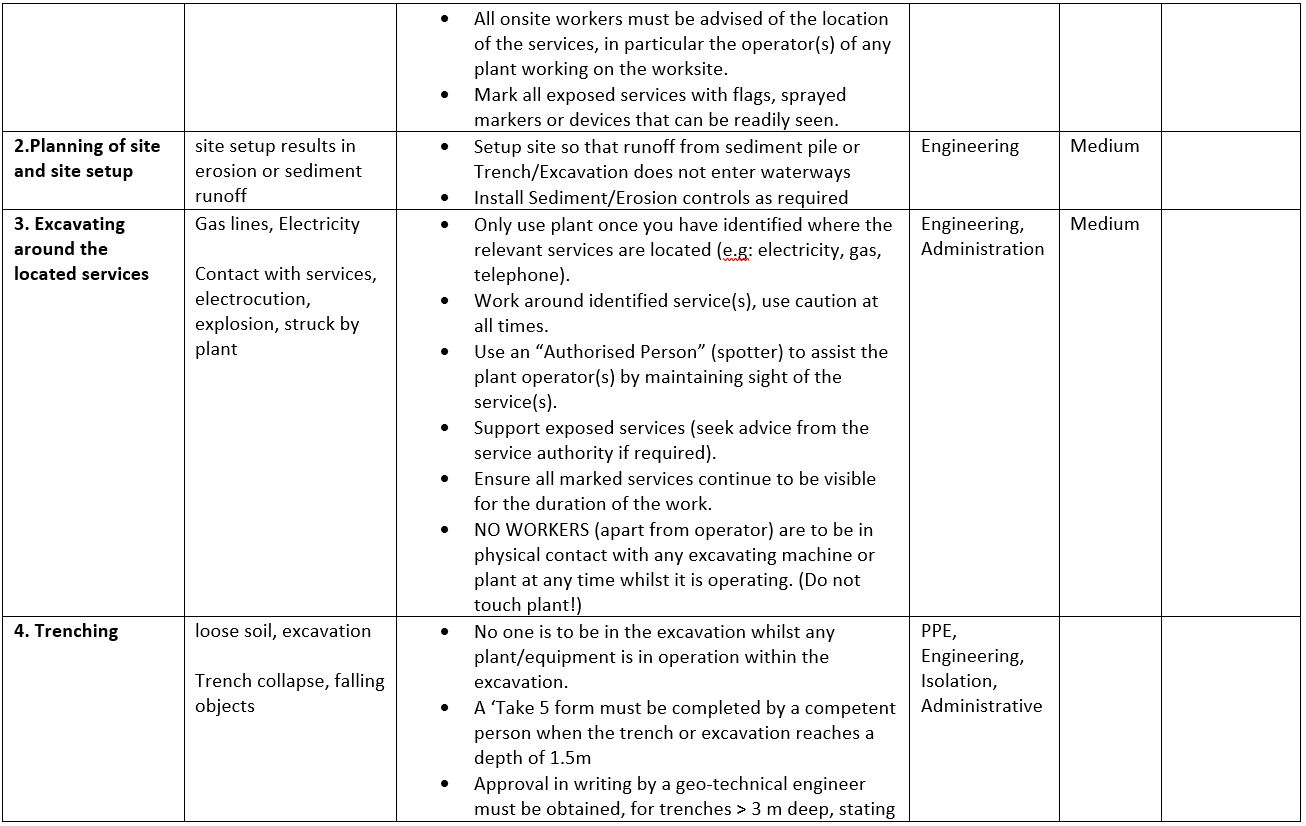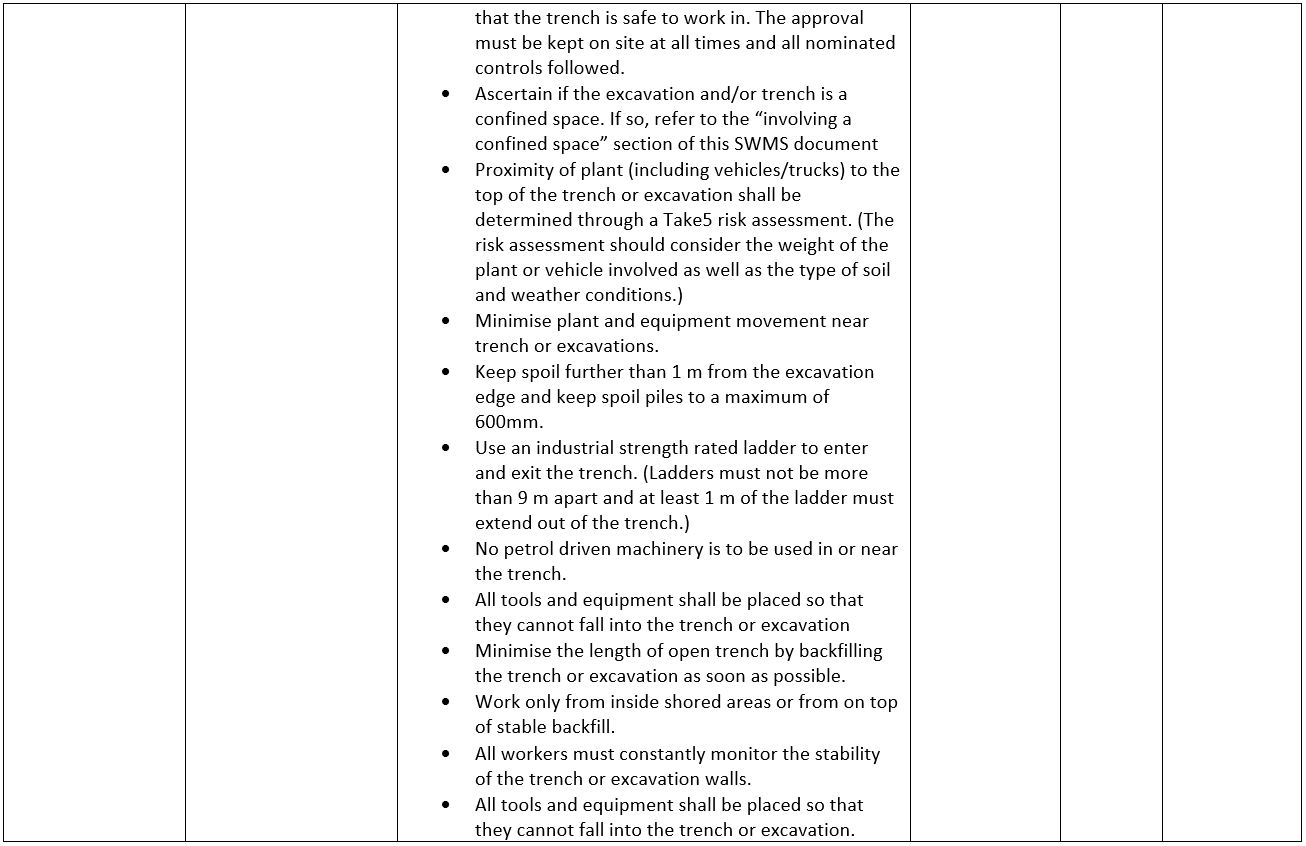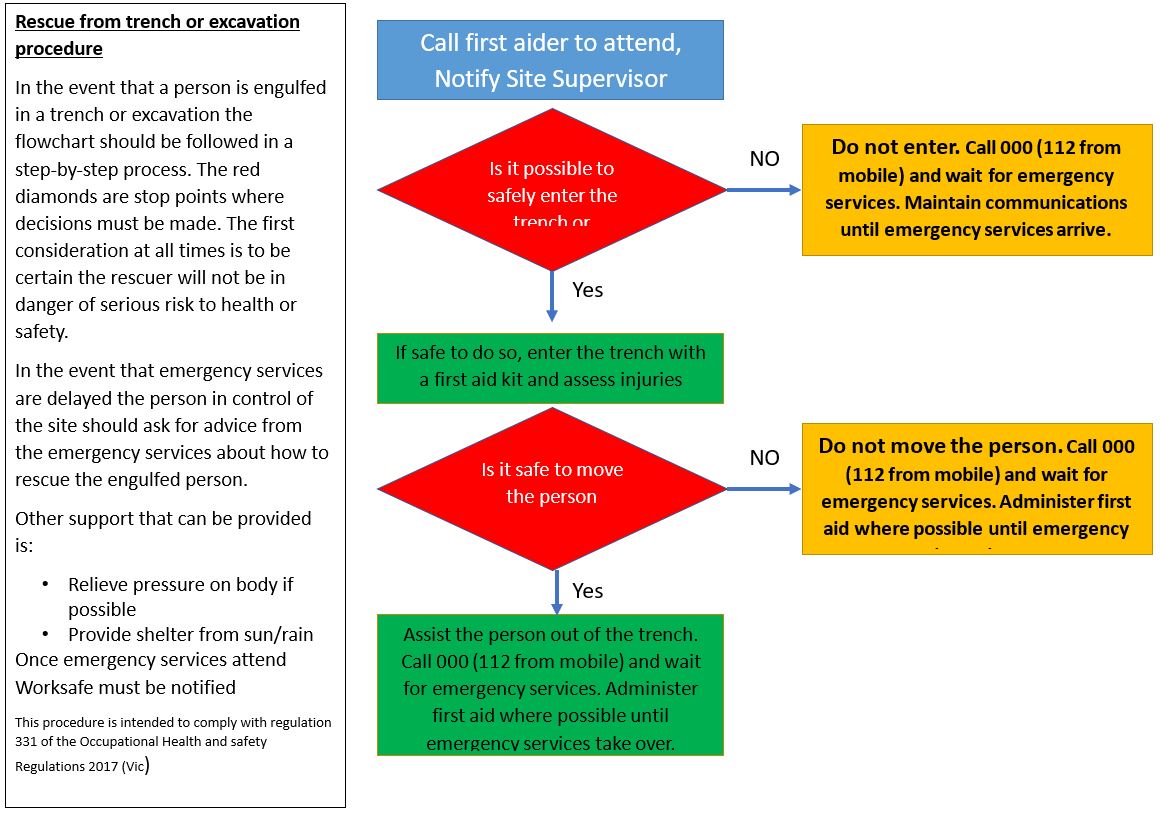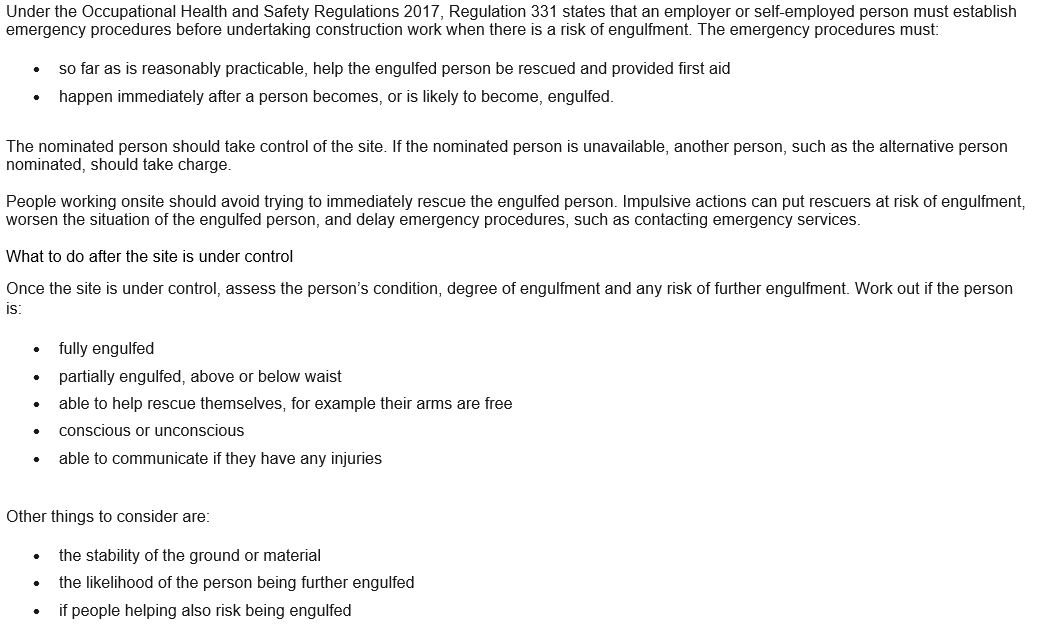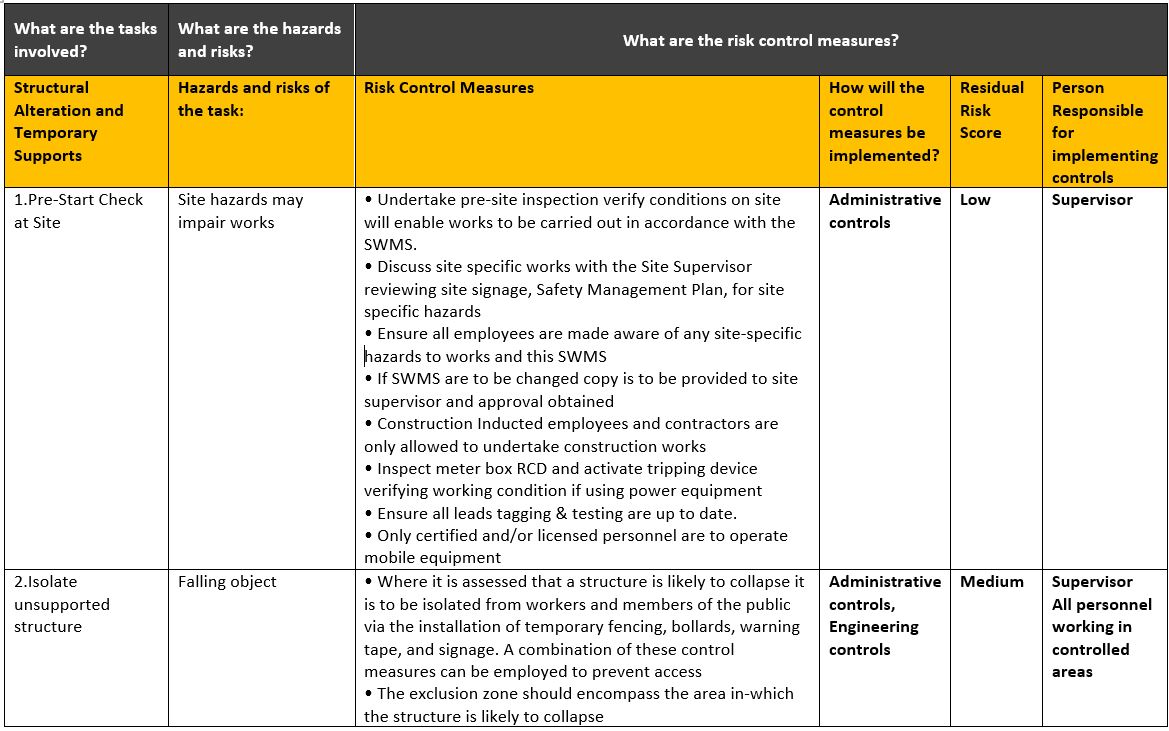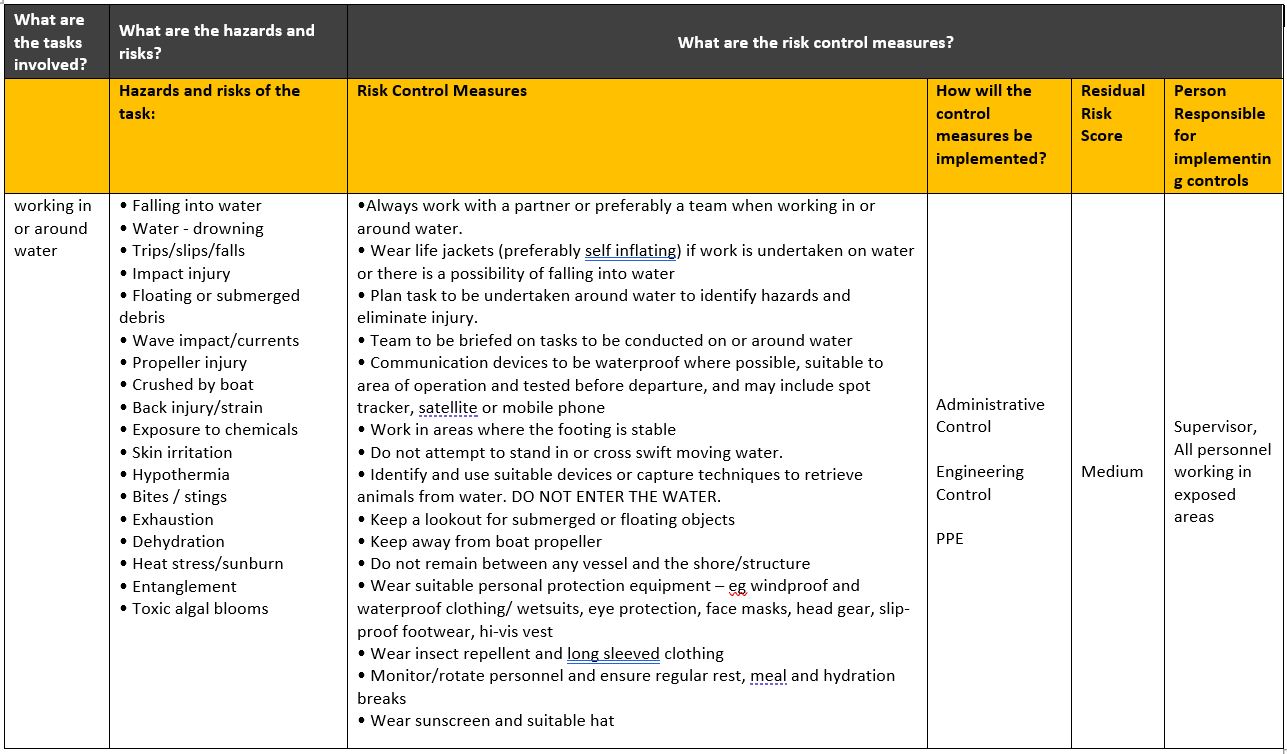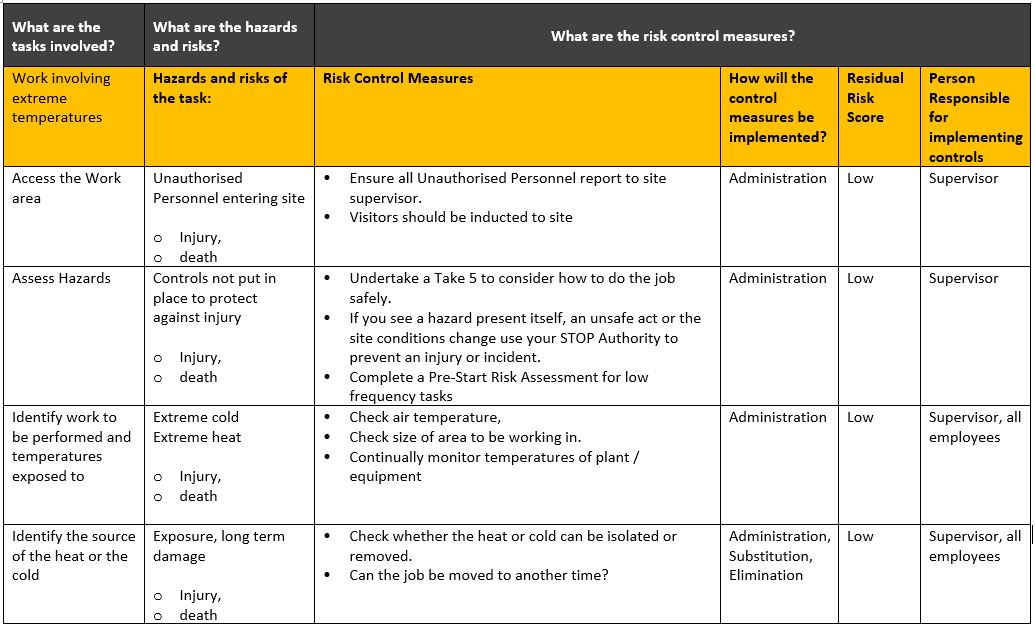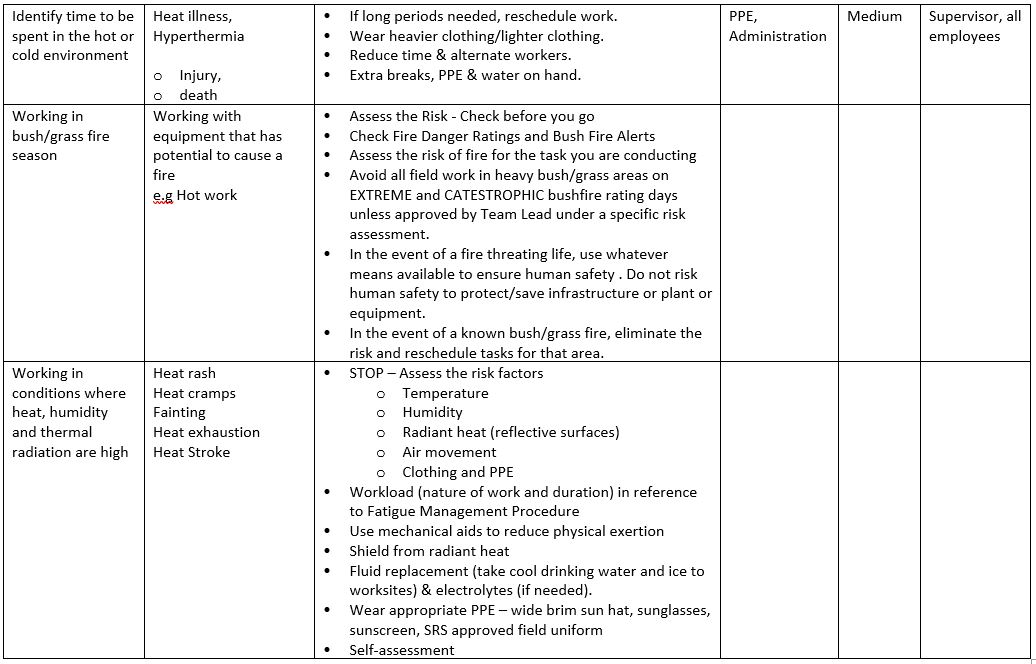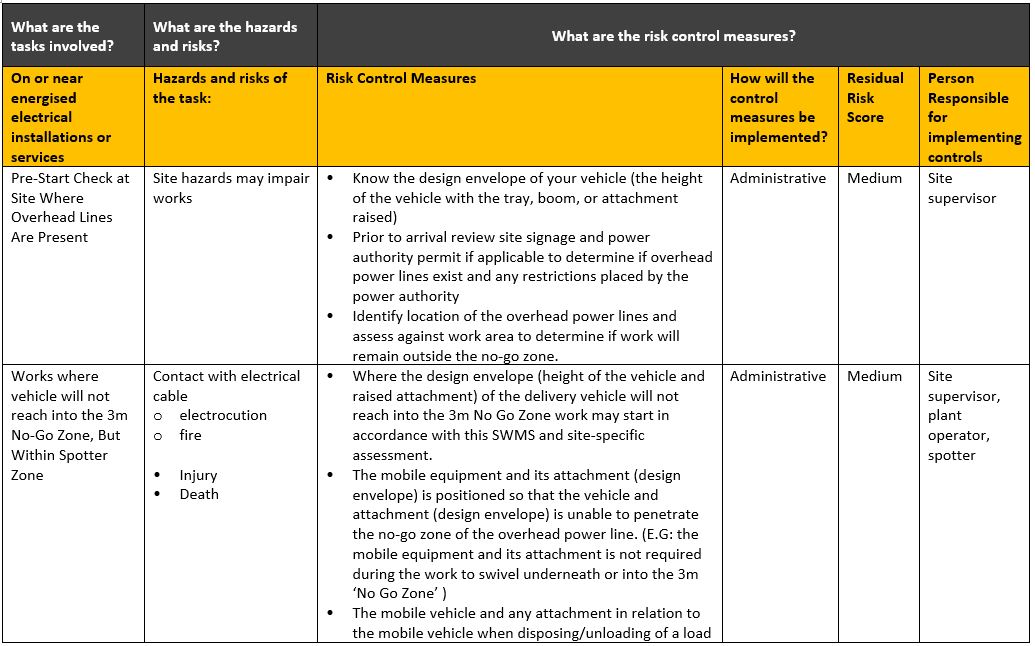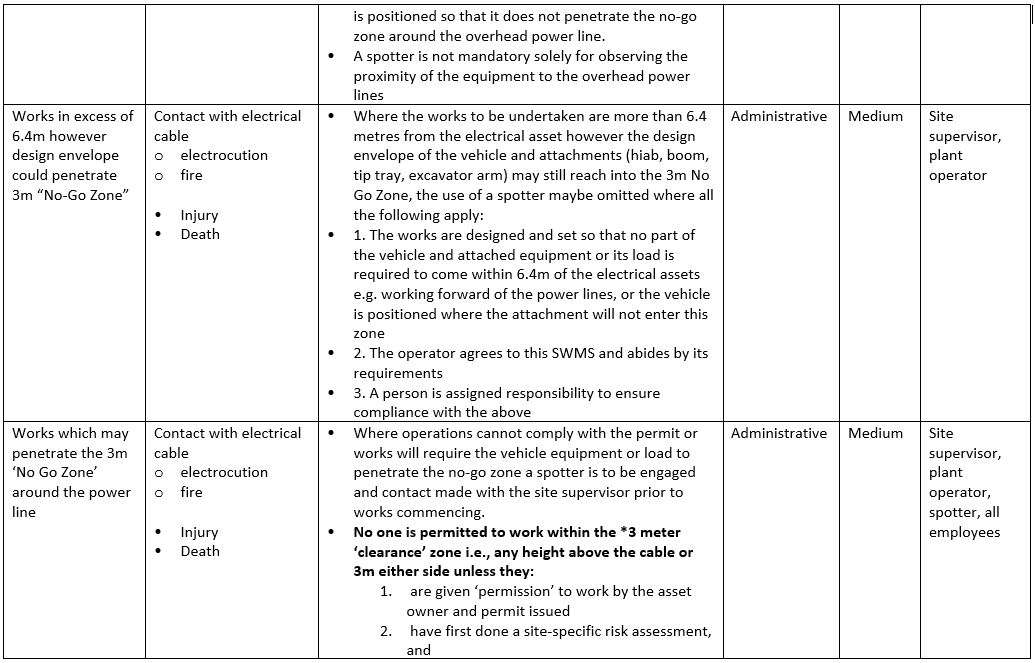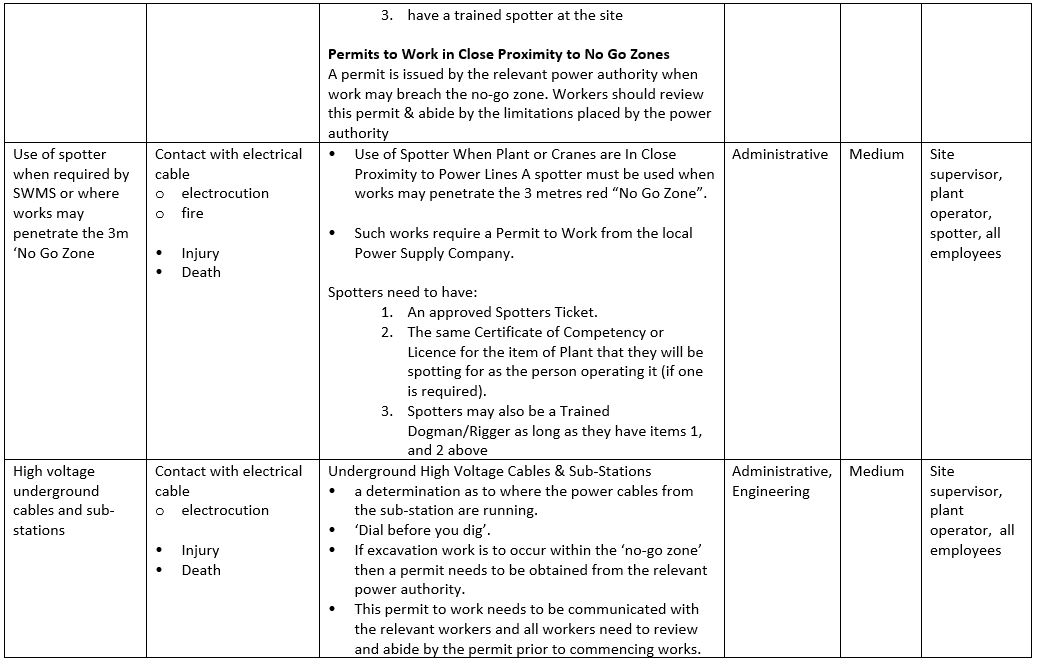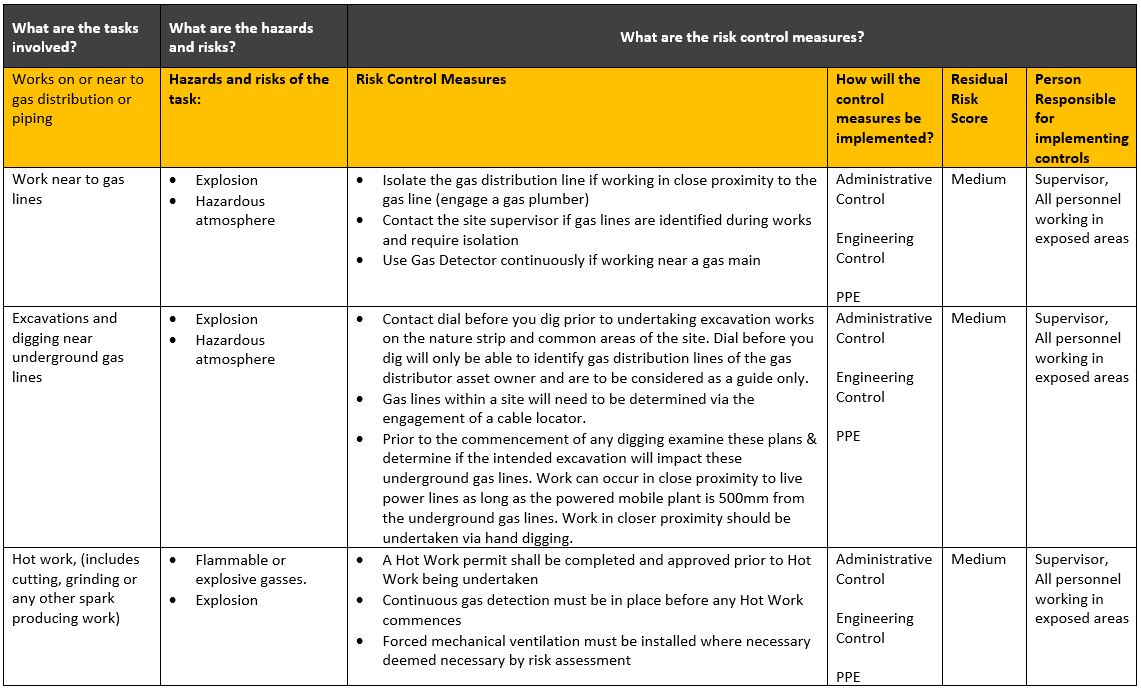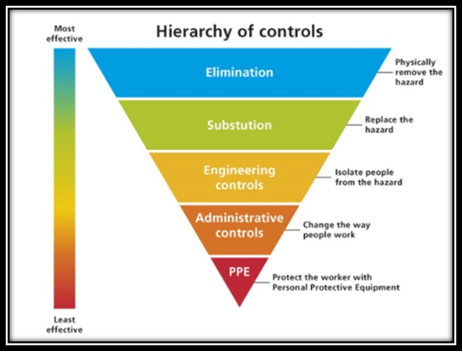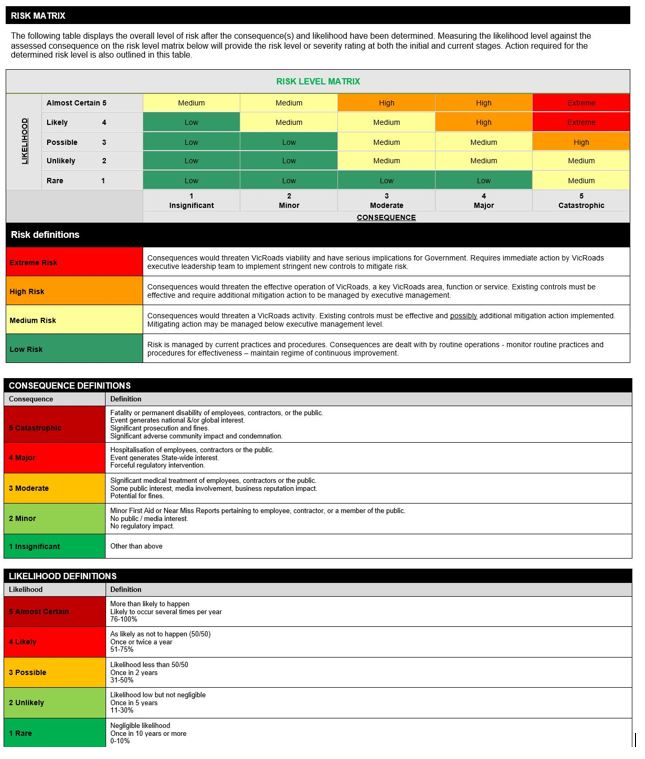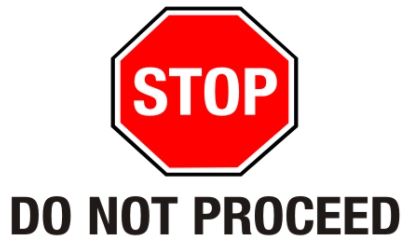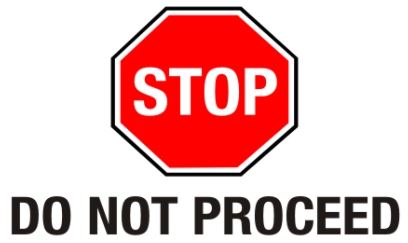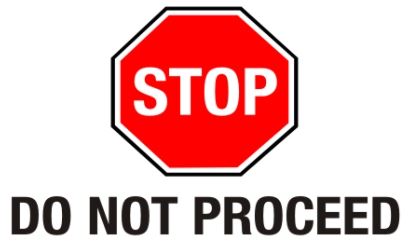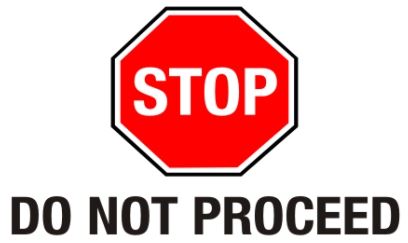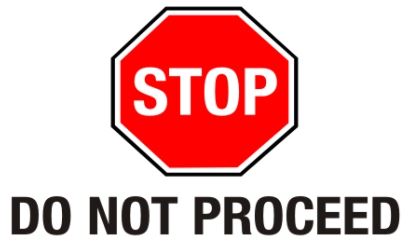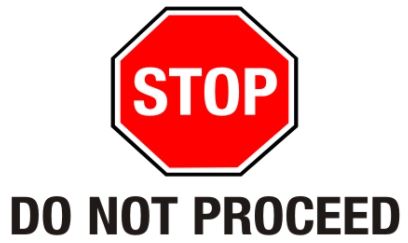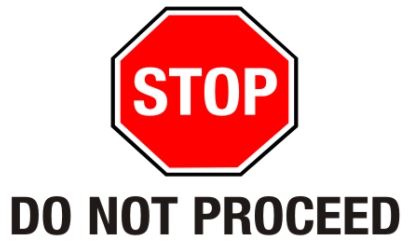Title Page
-
Site conducted
Is this SWMS associated with an Asset? Select asset!
-
Location (Site Specific)
-
Date (Today)
-
Prepared by
-
Description of Job
- Traffic Management
- Road maintenance
- Construction
- Inspection
- Audit
- Observation
- Other
-
List other
-
Job Number (Enter the job detail here if required)
-
You can add relevant documents in PDF format as attachments if required
-
Valid Period
- Today
- As Specified
- January
- February
- March
- April
- May
- June
- July
- August
- September
- October
- November
- December
-
Commencement Date
-
Completion Date
SWMS Instructions
SWMS Instruction
-
..................
-
-
Have you completed a Take5?
-
-
This is a quick guide to completing a SWMS for Roadworker Ver 3.1
PPE
PPE
-
-
Personal Protective Equipment (PPE) may be clothing or devices that are used as a barrier to protect workers from exposure to a wide variety of workplace hazards. Types of PPE may include clothing, high visibility garments, footwear, gloves, goggles, face shields, safety glasses, hard hats, earplugs, earmuffs and sunscreen. Other task specific PPE may be required for example working at night which will be detailed in the appropriate work instruction.
If you are unsure on the PPE requirements for the site you are attending then call the site supervisor for this information. As a minimum you should have:
• safety boots
• long pants
• long sleeve shirt The standard for day night PPE is AS/NZS 4602.1:2011 Class D/N
This Standard specifies the visual requirements for high visibility safety garments for occupational wear by people who may be exposed to the hazard of moving traffic, moving plant or equipment in high-risk situations. -
High Vis
-
Long pants/sleeves
-
Safety Shoes
-
Sunscreen/Hat
-
Hard Hat
-
Gloves
-
Safety Glasses
-
Hearing Protection
-
Face Shield
-
Dust Mask
-
Fall Protection
-
Other PPE - as requires by task and mandated by the site being visited
High Risk Activities
-
on or adjacent to roadways or railways used by road or rail traffic
-
-
-
Note: Always have access to the following documentation on site for Safety and Compliance purposes: Memorandum of Authorisation (MOA), Traffic Management Plan (TMP), Traffic Guidance Scheme (TGS), signed Safe Work Method Statement (SWMS), Work Instruction and Completed Take 5 Risk Assessment.
Time Reference: For works less than 5 minutes includes site setup and abolishment. For works greater than 5 minutes and less than 20 minutes includes site setup and abolishment. -
If on a rail corridor, STOP! Do not proceed!
-
at workplaces where there is any movement of powered mobile plant
-
-
-
-
-
where there is a risk of a person falling more than 2 metres
-
-
-
-
-
involving a trench or shaft deeper than 1.5 metres
-
-
-
-
-
-
-
structural alterations that require temporary support to prevent collapse
-
-
-
-
in, over or adjacent to water or other liquids where there is a risk of drowning
-
-
in an area where there are artificial extremes of temperature
-
-
-
on or near energised electrical installations or services
-
-
-
-
-
on or near pressurised gas distribution mains or piping
-
-
involving tilt-up or precast concrete
High risk activity identification
-
Job Step
-
Hazards
- Manual Handling
- Impacted by work
- Traffic
- Unauthorised access
- Plant & equipment
- Defective vehicle, plant, tools, equipment
- Situational awareness
- Occupational Violence & Aggression
- Site conditions
- Weather conditions
- Lightning
- Noise
- Radiation
- Exposure to heat, cold
- Communication
- Confined spaces
- Driving for work purposes
- Hazardous materials
- Hazardous substances
- Liquid & gases under pressure
- Dangerous goods
- Electricity
- Biological hazards
- Workingalone
- Workers
- Working in remote locations
- Animal bites
- Ergonomics
- Sharp objects, edges
- Vibration
- Physical condition
- Working at night, in low light
- Building and structures
- Fall from height
- Falling Objects
- Slip, trips or falls
- Other
- Reference
-
Reference
-
Required Controls
-
Hierarchy of Controls
- Elimination
- Substitution
- Engineering
- Adminsitrative
- PPE
- Reference
-
Reference
-
People Responsible for Controls
- Director
- HSEQ & Risk team
- Regional Manager
- Operations Manager
- Team Leader
- Supervisor
- Crew
- Contractor
- Subcontractor
- Other
-
Residual Risk Rating
-
Reference
-
on or near chemical, fuel or refrigerant lines
High risk activity identification
-
Job Step
-
Hazards
- Manual Handling
- Impacted by work
- Traffic
- Unauthorised access
- Plant & equipment
- Defective vehicle, plant, tools, equipment
- Situational awareness
- Occupational Violence & Aggression
- Site conditions
- Weather conditions
- Lightning
- Noise
- Radiation
- Exposure to heat, cold
- Communication
- Confined spaces
- Driving for work purposes
- Hazardous materials
- Hazardous substances
- Liquid & gases under pressure
- Dangerous goods
- Electricity
- Biological hazards
- Workingalone
- Workers
- Working in remote locations
- Animal bites
- Ergonomics
- Sharp objects, edges
- Vibration
- Physical condition
- Working at night, in low light
- Building and structures
- Fall from height
- Falling Objects
- Slip, trips or falls
- Other
- Reference
-
Reference
-
Required Controls
-
Hierarchy of Controls
- Elimination
- Substitution
- Engineering
- Adminsitrative
- PPE
- Reference
-
Reference
-
People Responsible for Controls
- Director
- HSEQ & Risk team
- Regional Manager
- Operations Manager
- Team Leader
- Supervisor
- Crew
- Contractor
- Subcontractor
- Other
-
Residual Risk Rating
-
Reference
-
involving demolition
High risk activity identification
-
Job Step
-
Hazards
- Manual Handling
- Impacted by work
- Traffic
- Unauthorised access
- Plant & equipment
- Defective vehicle, plant, tools, equipment
- Situational awareness
- Occupational Violence & Aggression
- Site conditions
- Weather conditions
- Lightning
- Noise
- Radiation
- Exposure to heat, cold
- Communication
- Confined spaces
- Driving for work purposes
- Hazardous materials
- Hazardous substances
- Liquid & gases under pressure
- Dangerous goods
- Electricity
- Biological hazards
- Workingalone
- Workers
- Working in remote locations
- Animal bites
- Ergonomics
- Sharp objects, edges
- Vibration
- Physical condition
- Working at night, in low light
- Building and structures
- Fall from height
- Falling Objects
- Slip, trips or falls
- Other
- Reference
-
Reference
-
Required Controls
-
Hierarchy of Controls
- Elimination
- Substitution
- Engineering
- Adminsitrative
- PPE
- Reference
-
Reference
-
People Responsible for Controls
- Director
- HSEQ & Risk team
- Regional Manager
- Operations Manager
- Team Leader
- Supervisor
- Crew
- Contractor
- Subcontractor
- Other
-
Residual Risk Rating
-
Reference
-
involving a tunnel
-
STOP. Contact your supervisor for further instructions!
-
involving removal or likely disturbance of asbestos
-
STOP. Contact your supervisor for further instructions!
-
involving a confined space
-
STOP. Contact your supervisor for further instructions!
-
on telecommunications towers
-
STOP. Contact your supervisor for further instructions!
-
involving diving
-
STOP. Contact your supervisor for further instructions!
-
involving the use of explosives
-
STOP. Contact your supervisor for further instructions!
-
in an area that may have a contaminated or flammable atmosphere
-
STOP. Contact your supervisor for further instructions!
Resources
-
This section contains links to information such as DRWM, SDS, DTP Policies, Work Instructions and Legislation.
-
Links and reference material
SWMS Sign On
- Person On Site
-
I have understood and will comply with the information and directions contained in the Safe Work Method Statement
-
SWMS Manual sign on document. Scan and save a copy of this to the template.
-
Upload manual sign on form here
